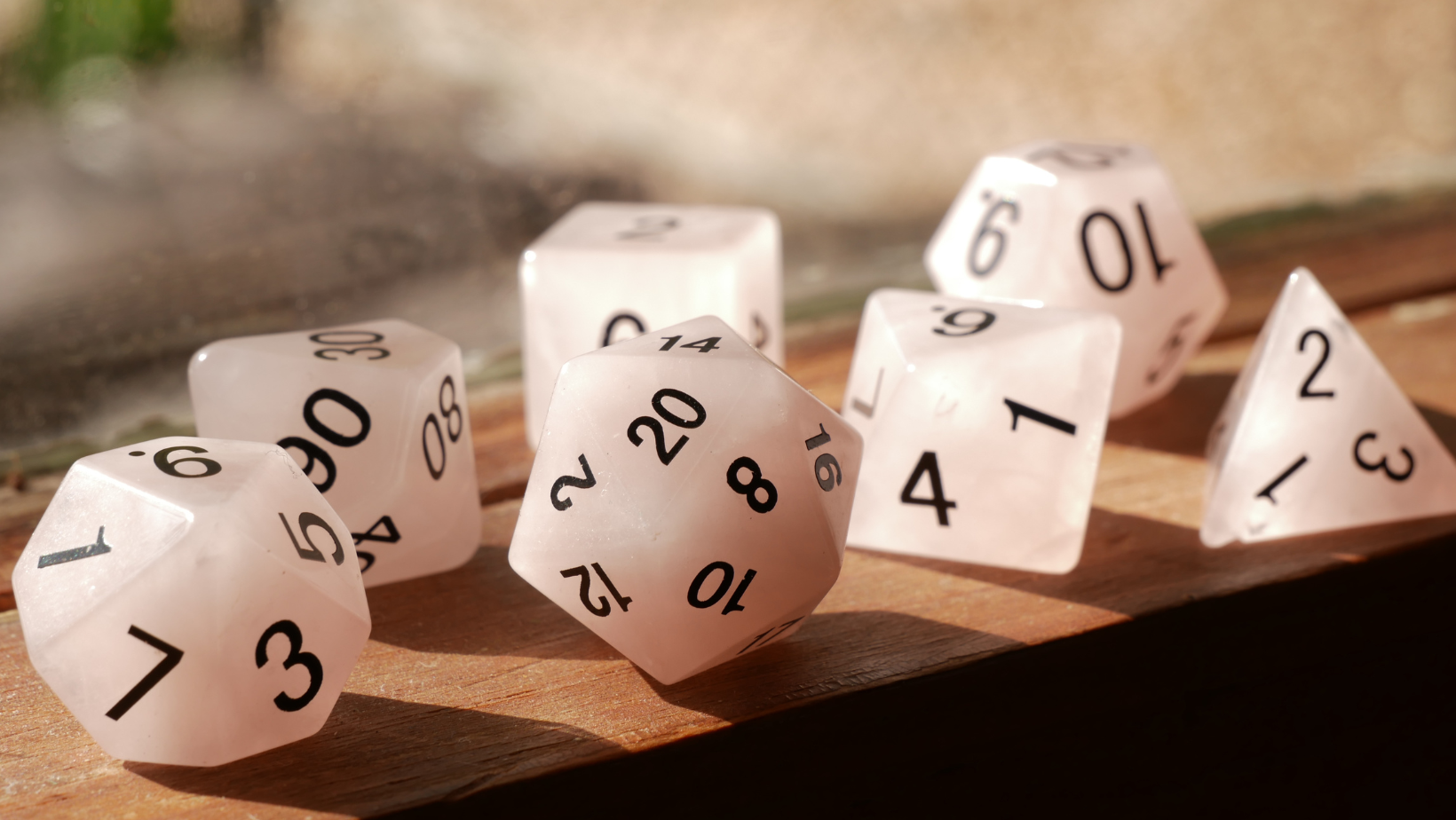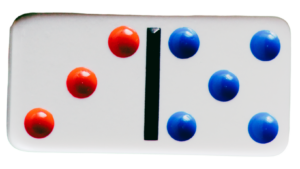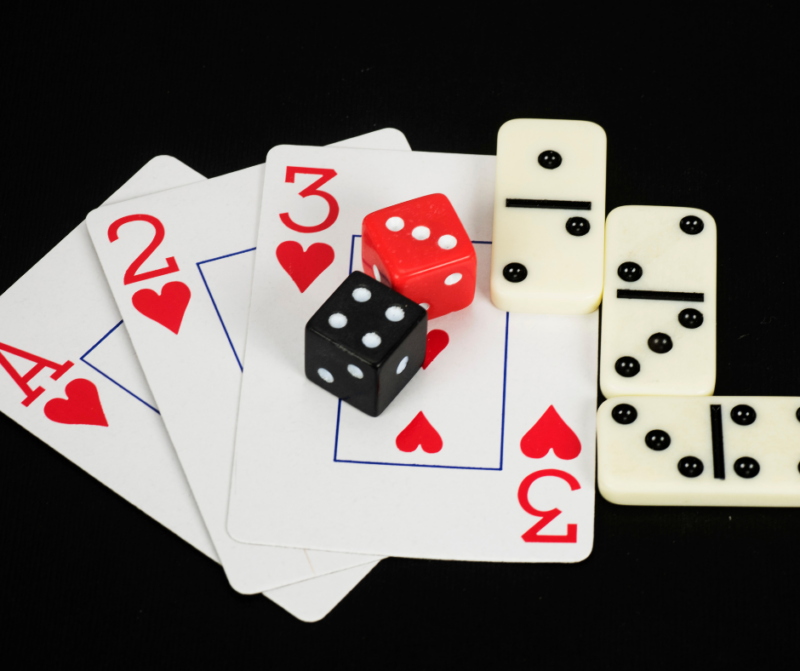Insights
Dice, Decks, and Dominoes: Using Inexpensive Supplies to Practice Math Skills
While there are a plethora of wonderful math aids available, some of them can be pricey, especially if you want a set for every student to use. Thankfully, there are also inexpensive supplies for students to use when practicing various math skills. Three of these are dice, decks of playing cards, and dominoes. The activities mentioned below can be used as part of collaborative learning activities or individual centers. The best part is that students are having fun while still building number fluency and practicing their math skills.
Dice
Dice are a great math aid. They come in a variety of colors and sizes. Some are designed to be dice inside of dice, while others have multiple sides. Foam dice provide a quiet option. One tip is to provide a plastic tray with high sides for dice to be rolled in. This will prevent the dice from being rolled too far. To reduce the noise made when the plastic is hit, glue a piece of foam onto the bottom of the tray.

- Race to 100: On the turn, each player rolls two dice (six or ten-sided) and records the sum. The player who reaches an accumulated sum of 100 first wins the game. Watch out though, because if a player rolls a one on both dice, their accumulated score is erased and they have to start over! This game can also be played to practice subtraction by simply starting at 100 and racing back to 0. To increase the difficulty, have students race to 1,000 using two 6-sided or 10-sided dice to make a two-digit number. Determine beforehand whether they are allowed to choose the order of the numbers (i.e., 26 vs. 62) or use two different colored dice to differentiate between the ones and tens. Again, this game can be used in reverse with subtraction.
- Starting number: The following is ideal for an individual center activity to practice mental addition and subtraction with one die. The student starts by choosing a number card, such as 42, and an operation card (add or subtract). Have them roll the die, and then add or subtract that number from the starting number. Set a timer for 2-3 minutes. Once time has run out, they choose a new card and operation to continue the activity and practice number fluency skills.
- Roll and compare: Students roll two dice (or two pairs of dice) to determine two numbers, using the dice in the order they are rolled. They then add a symbol (<, >, =) between the two numbers to make a true statement.
- Make that number: Students are given a sheet of numbers. They roll three dice and add or subtract the numbers to make a number. If the answer is listed on the game sheet, they color over it. The player forfeits their turn if the numbers cannot be added or subtracted to match a number remaining on the sheet. The game continues until the numbers have all been colored. The student who was able to make the most numbers wins! For a free number board and other game ideas, click here! For a more advanced variation, use a board with larger values and have students roll two dice to multiply together to color the products.
For more great dice activities, be sure to check out these resources:
10 Math Dice Games for Kids: Addition, Multiplication, Place Value, & More
21 Fun Math Games with Dice for Kids 8-12 and FREE Printable Dice – That’s So Montessori
11 Engaging Addition & Subtraction Games with Dice for Elementary Students
Free Printable Roll and Cover Dice Games for Kids
16 Math Games You Can Play with Cards or Dice – Homeschool Compass
Decks
A simple deck of playing cards can be used in countless math activities. Here are a few tips when using decks of cards. Put a colored dot on each card corresponding to the same color label on their plastic storage bag or box. This will help a lost card find its way home. Either write directly on the cards or attach a list to the storage container showing that ace = 1, jack = 11, queen = 12, and king = 13. For activities that only require numbers 1-9, simply remove the face cards or use them as a special card, like skip, lose your turn, or take another turn.

- Plus red, minus black: This can be used as an individual activity or with multiple players. Decide beforehand on the goal (i.e., 100 points, 10 rounds, 5 minutes, etc.). Students flip over cards one at a time. If the card is red, they add one to the number on the card and record their score. If the card is black, they subtract one from the number and record their score. The player who reaches the goal first, with the highest score, wins!
- Go fish to make 10: Students follow the same rules of go fish, asking each other, “Do you have a…?” If the other player has the card, they give it to them. If the other player does not, the asking player draws a card from the draw pile. The goal for this variation is to match two cards to make ten (i.e., 3 + 7 or 6 + 4). Play continues until there are no more cards left to draw. The player with the most matches wins!
- Fraction war: Two players are each dealt half the deck. Two lines, or pencils, will be used to represent the fraction line. It is best if players sit side by side for this game. At the same time, players turn over two of their cards. They place them as the numerator and denominator. (Decide before the game starts whether players can change the order of the cards.) Players compare the fractions, with the larger one winning all four cards. In the event of a tie, players continue creating fractions until a winner emerges who gets all of those cards. The game continues until one player has won all of the cards.
Need more ideas on using playing cards in math? Try these:
28 Math Card Games for Students to Ace
The 20+ Best Math Card Games That Are Easy To Learn | K-8
Math Card Games for Kids: 30 Ideas and Their Objectives Teaching Expertise
Kids Math Card Games: All You Need is a Deck of Cards!
18 Easy Math Card Games for Kids – KidPillar
Dominoes
Dominoes are wonderful to practice math skills with. You can find them in black and white or any color. They are also available in plastic or foam.

- More or less: Decide ahead of time what the winning score will be, such as 100. To begin, all dominoes are placed face down. On their turn, a student flips over one domino. They turn it sideways to create the highest two-digit number possible. They record their score. Next, the other player repeats the same process. This game can also be played in several other ways. Variation 1: Students can practice subtraction by starting at 100 and working their way back to 0. Variation 2: They can use two dominoes to make a four-digit number, choosing the order of the dominoes (not the individual numbers on them) to create the highest 4-digit number possible. Variation 3: Students turn over the two dominoes and add, subtract, or multiply the numbers to get their score.
- Domino War: Determine which operation will be used (addition, subtraction, or multiplication). Dominoes are kept face-down and divided evenly between players. Students each turn over one domino. The numbers on their domino are added, subtracted, or multiplied. The player with the largest number wins both dominoes. The game continues until one player has won all of the dominoes.
- Ordering Decimals: This activity is great for an individual center or with multiple players. Dominoes are placed face down. Students choose five dominoes and turn them over. The leftmost value is the number of wholes (or ones) and the value(s) to the right represent decimal place values.

For example, this domino represents 3.5. Students can decide which side they’d like to use for which. The dominoes are then placed in order from least to greatest or greatest to least. To use this activity as a game, each player calculates the difference between their greatest and least decimal. The player with the greatest difference wins. To practice place value to the thousandth place, students would use four dominoes to make their number.
Ready for more domino math activities? Give these a shot!
Math Games Using Dominoes: The Teacher Next Door
10 Domino Addition Games and Activities for Your Math Centers
10 Math Games to Play with Dominoes | Upper Elementary Snapshots
Domino Math Activities for Building Number Sense – Polliwog Place
One exciting idea is to provide students with an activity bag with dice, a deck of cards, and dominoes. Be sure to include detailed instructions on how to play each game or provide links to websites where students can find various game ideas. Not only are these games a great way for students to enhance their math skills outside of the classroom, but they also serve as an excellent opportunity to foster quality family bonding time. Did someone say family game night?



